Ancient Psychedelia: Alien Gods & Mushroom Goddesses
Online Book - Chapter 11, Page 213
Back to Online Book Mainpage / Next Page (Chapter 11, Page 214)
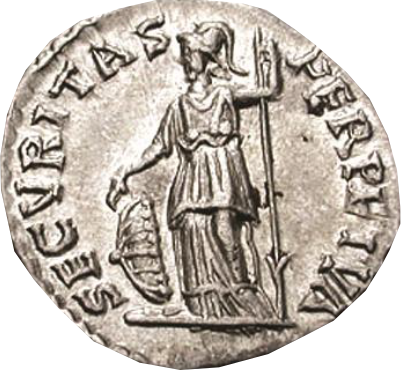 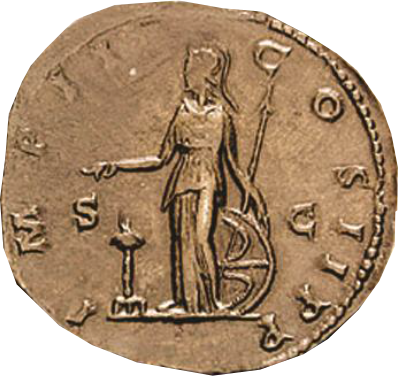 R: (55m) Minerva sacrificing over altar holding spear w/ shield c. 175 AD Zeus gave him a harpe, a type of sickle in which to “reap” the head of the Gorgon. In the Apples of Apollo, (Fig. 9), Ruck has an excellent example of a Greek vase depicting Perseus in the garden, with a sickle, about to pick or “reap the golden apples” from the tree, and above him are two mushrooms displayed prominently. Many of the depictions of the Garden of the Hesperides depict a serpent, Ladon, entwined around this tree with the golden apples, protecting it. The hero is often portrayed attempting to slay the serpent Ladon. Obviously, the golden apples are a metaphor for the mushroom, just as the apple in the Garden of Eden is, the only difference being the color golden is associated with the yellowing-orange color of some varieties of A. muscaria or the drying and yellowing which occurs after picking them. They have been described previously as “golden suns on the ground” in the Rig Veda as well. (232) Athena instructed Perseus to find the Hesperides, where he would be given the weapons needed to conquer Medusa. The Hesperides were the daughters of Atlas, who went by the title “Atlantides”, which is quite possibly where Plato derives the name of Atlantis from. They were also called the “Nymphs of the West” and the “Daughters of the Evening.” Once Perseus slayed the Medusa, the wound and the blood that dripped forth created Pegasus and Chrysaor. Perseus is also said to have founded the city of Mycenae. Citing Pausanius: “Perseus, ashamed because of the gossip about the homicide, on his return to Argos induced Megapenthes, the son of Proetus, to make an exchange of kingdoms; taking over himself that of Megapenthes, he founded Mycenae. For on its site the cap (myces) fell from his scabbard (sword), and he regarded this as a sign to found a city. I have also heard the following account. He was thirsty, and the thought occurred to him to pick up a mushroom (myces) from the ground. Drinking with joy water that flowed from it, he gave to the place the name of Mycenae.” (233) I find this to be is a very interesting description of this founding of Greece because the early Graeco-Roman coins which display the sword handle look identical to mushrooms (49g). Is this a coincidence that the sword handle resembles the shape of the mushroom? In Greek, the word mykes was also a metaphor for the phallus. (234) Oddly enough, the first coins from tribal issues of Greece feature what is claimed by numismatists to be a “gorgon head” (48b). It is clearly a mushroom, but there are thousands of coin experts who would probably disagree with me. I found another couple of these scattered around the world as well, on Ethiopian Tiya stones, dated 1000-1500 AD (27f), and disguised in the face of the idol of Al-Uzza, at the Temple of the Winged Lion, in Petra, Jordan, c. 100 AD (27g). |
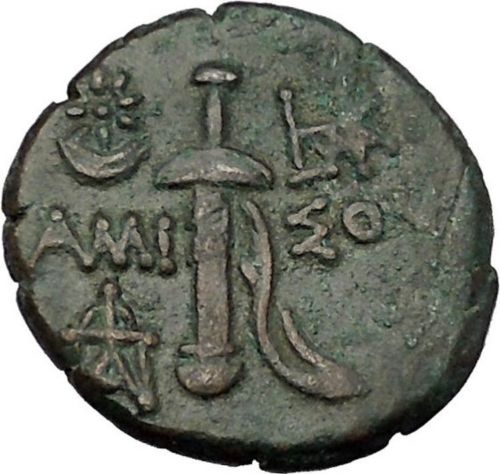 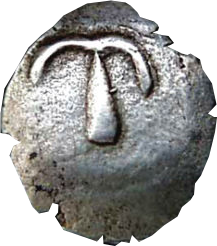 R: (49b) Greek Tribal Issue, Thrace. Gorgon Head c. 480-380 BC 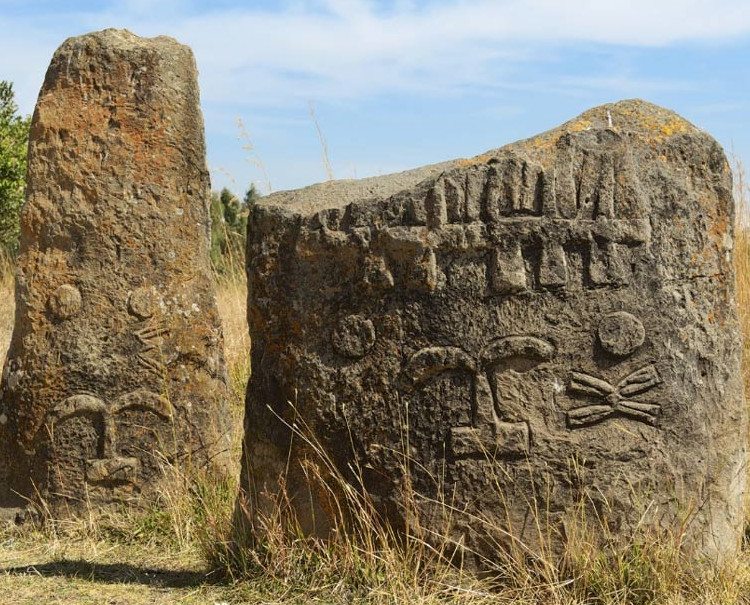 (27f) Ethiopia Tiya Stones c. 1000-1500 AD 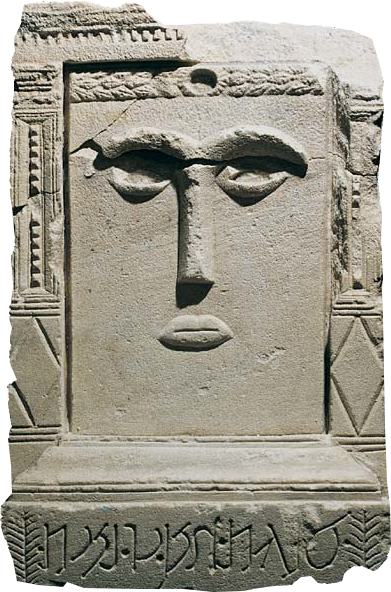 (27g) The idol of Al-Uzza, found in the Temple of the Winged Lion, Petra, Jordan c. 100 AD (232) Apples of Apollo, p. 42-43 (233) Pausanius Description of Greece c. 150 AD, 2.16.3, Transl. W. H. S. Jones; http://www.theoi.com/Text/Pausanias2B.html (234) Apples of Apollo, p. 45; Archilochus, glossed in Hesychius, (T. Bergk, P.L.G. frag. 47 |
Go Back to Page 212